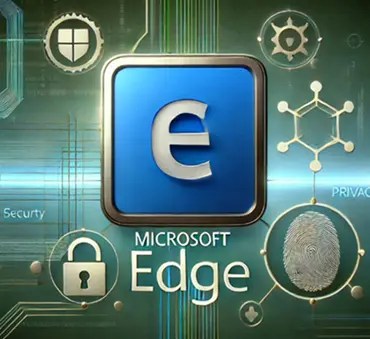Microsoft Edge is now a strong contender in the browser market, thanks to its substantial changes since switching to the Chromium platform. With its improved security features and extensive privacy options, Edge has emerged as a strong contender for those who prioritize a private and secure browsing experience.
To be effective in protecting you from online threats, even the finest browsers require a security upgrade. Follow along as we show you how to adjust the most important settings on Edge to make it more secure and private.

Contents
- 1 5 Settings to Enhance Microsoft Edge Privacy and Security
- 2 Conclusion:
5 Settings to Enhance Microsoft Edge Privacy and Security
1.Tracking prevention
Web browsers can gather less information about your online activities when you use Microsoft Edge’s tracking prevention function. Microsoft Edge classifies this feature into three levels: basic, balanced, and strict.
To enable tracking prevention:
- Go to Settings > Privacy, search and services > Tracking prevention.
- Select either the Balanced or Strict level. The Strict level provides maximum protection but may affect some website functionalities.
![]()
2.Enable Enhanced Security Mode
Microsoft Edge has a robust feature called Enhanced Security Mode that can make websites you rarely visit even more secure.
By using operating system safeguards like Control Flow Guard, Hardware Enforced Stack Protection, and Arbitrary Code Guard (ACG), this mode disables certain sophisticated website capabilities, thereby reducing the danger of cyberattacks.
To enable Enhanced Security Mode:
- Navigate to the Settings menu by clicking the three dots in the upper right corner.
- On the left pane, click “Privacy, search, and services.”
- Scroll down in the right pane to the Security area and enable the “Enhance Your Security on the Web” option.
- You can select the balanced mode or the strict mode. Although it provides the greatest protection, the strict mode could interfere with several features of the website.

Note: To get the best of both worlds (security and usability), we suggest using the “Balance” mode. The “Strict” mode provides extra security, but it could cause issues with some websites.
3.Activate Microsoft Defender SmartScreen
To protect you against dangerous information, such as phishing sites and malware, Microsoft Defender SmartScreen scans all the websites you visit and all the files you download. This function provides real-time protection in Windows Defender.

To enable Microsoft Defender SmartScreen:
- Go to Settings > Privacy, search, and services.
- On the right pane scroll down and go to the “Security” section.
- Enable Microsoft Defender SmartScreen.
- For added security enable, enable Block potentially unwanted applications.
4.Configure Automatic Data Deletion
One way to make Microsoft Edge even more private is to configure it to erase all of your browsing history whenever you close the browser.

To enable automatic data deletion:
- Go to Settings > Privacy, search and services.
- Find the “Delete Browsing Data” section and, below Clear Browsing Data, choose the option to erase specific data every time you close your browser.
- Turn on the features you want, such as caching images and files and auto-filling form data.

5.Use a Secure DNS
A secure DNS can significantly enhance your privacy and security. In Microsoft Edge, you have the option to set up a secure DNS provider.
To configure a secure DNS:
- Navigate to Settings > Privacy, Search, and Services.
- Under the Security section, enable the “Use secure DNS to specify how to lookup network addresses for websites,” option.
- Choose a trustworthy DNS provider like CleanBrowsing, Google Public DNS, CloudFlare, or OpenDNS from the “Choose a service provider” menu.
- Another option is to manually input the DNS-over-HTTPS (DoH) address from a different provider.

Additional Tips to Enhance Microsoft Edge Privacy and Security:
Minimize Data Collection
Go to Settings > Privacy, search, and services. Under the Privacy section, disable the below listed features or options.
- Disable the saved payment methods: To disable websites from checking if you have saved payment methods, turn off the Allow Sites option to check if you have saved payment methods.
- Disable optional diagnostic data.
- Disable search enhancement.
- Disable Personalisation & advertising.

Conclusion:
Strong privacy and security measures are now standard in Microsoft Edge, a powerful browser. Following the tips in the article and enhance Microsoft Edge Privacy and Security
Keep in mind that apart from browser security settings, your habits play a significant role in determining how safe your browsing is: stay away from suspicious sites, download from reliable sources only, and use different passwords for each account.
Discover more from Techno360
Subscribe to get the latest posts sent to your email.



You must be logged in to post a comment.